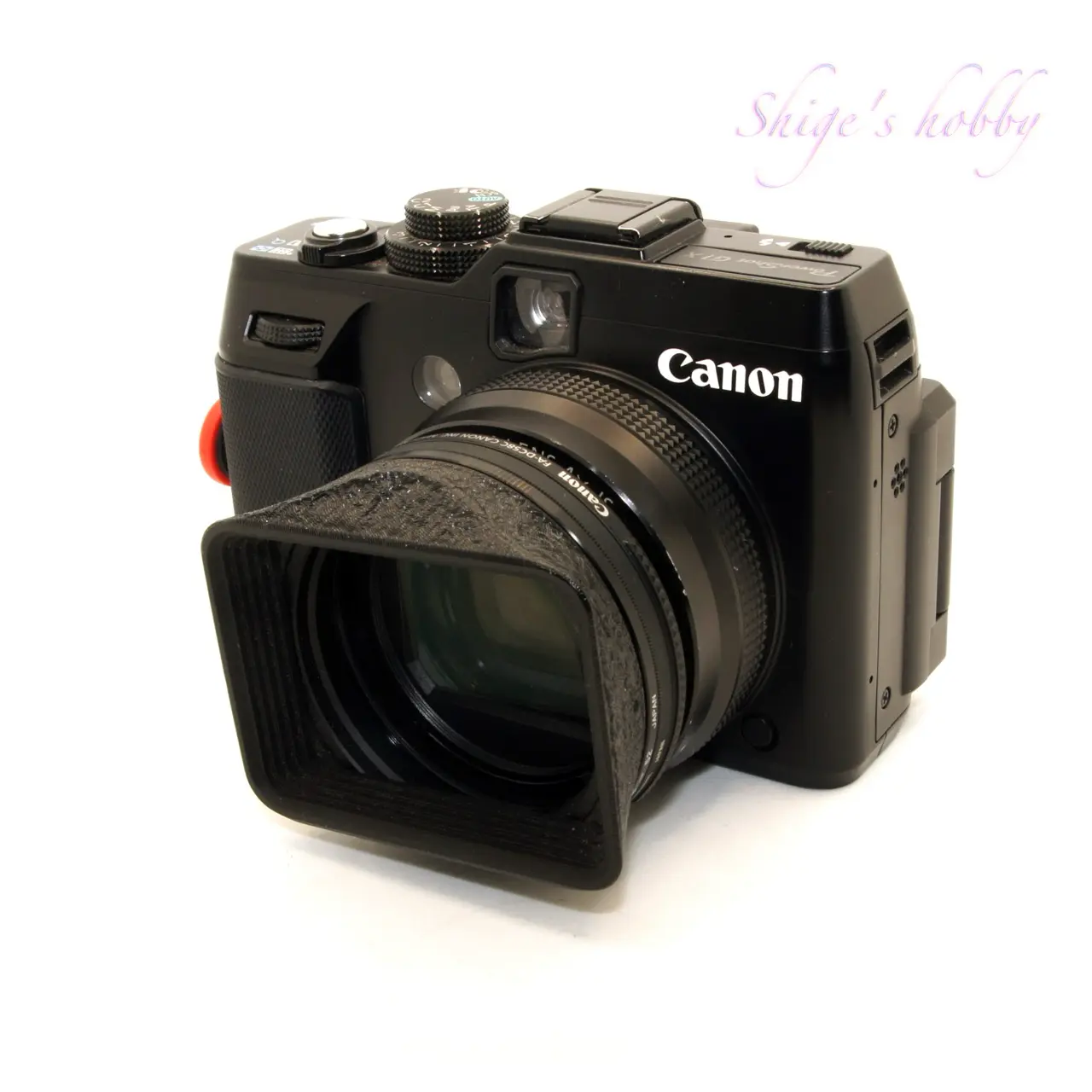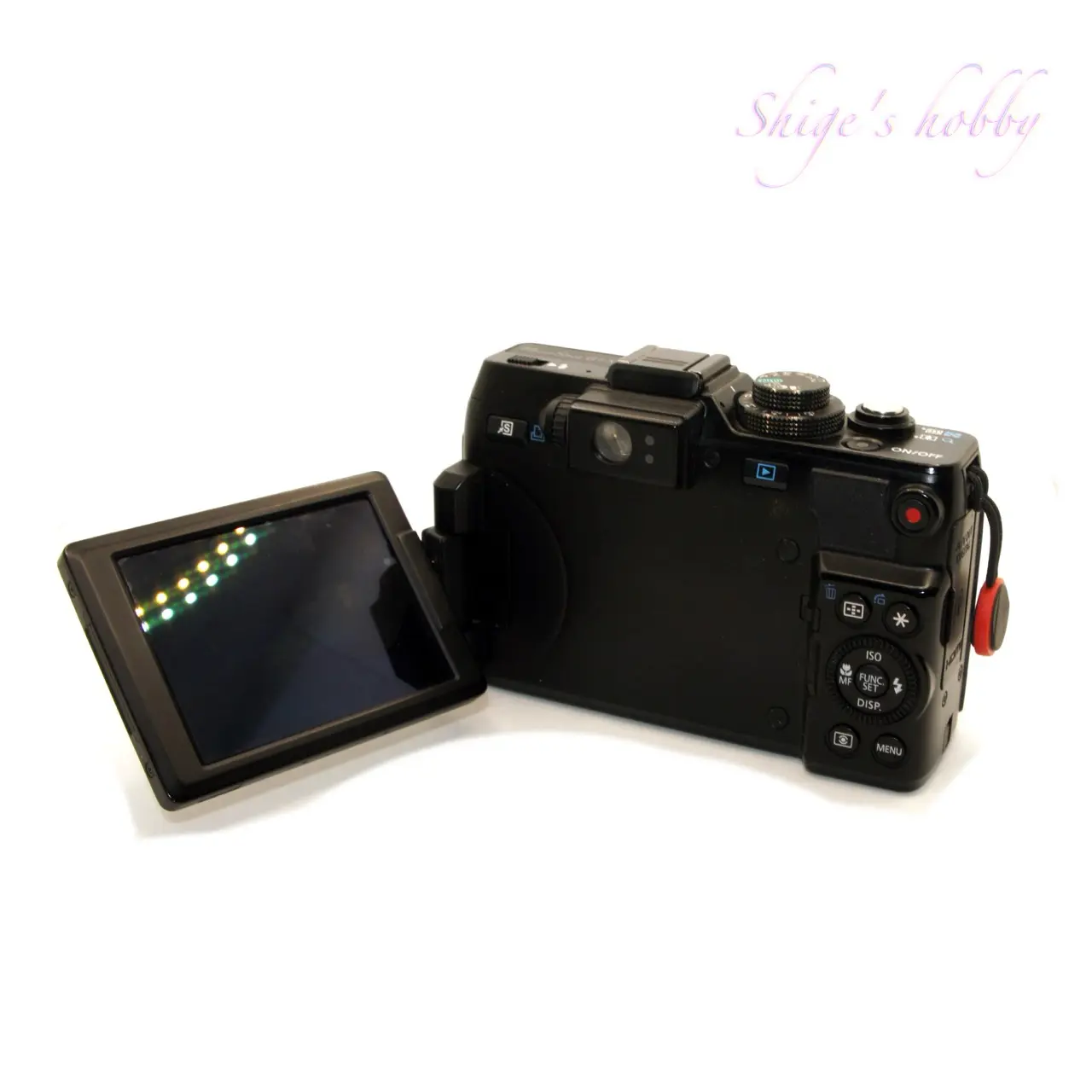Last updated on 2025-10-26
A review and photo examples of the Canon compact digital camera IXY 30S.
- Please see the disclaimer regarding advertising here.
- Italicized links in the text are advertisement links that take you to other sites.
Table of contents
Gallery
Review


1.Overview
This is the first camera in the G series, the highest class of the PowerShot series, and is a camera packed with features such as a 1.5-inch sensor, a 28mm to 112mm 4x zoom lens, a real image optical zoom viewfinder, and a pixel count of 14.3 million pixels.
The image processing engine is “DIGIC 5”, and the lens configuration is multi-layer coated with 10 groups and 11 elements, including one double-sided aspherical lens and two double-sided aspherical UA lenses.
The lens is equipped with a “Multi-Scene IS (Image Stabilizer)” image stabilization mechanism, which automatically switches to the optimal IS mode for six scenes: “Still Image IS”, “Panning IS”, “Hybrid IS”, “Tripod”, “Powered IS”, and “Dynamic IS”. The correction effect is nominally about 4 stops in shutter speed conversion, and the same effect is also seen in video shooting.
The minimum shooting distance is 20 cm in macro mode.
The dedicated bayonet-type LH-DC70 hood is sold separately. The FA-DC58C is required to attach filters.
The battery is NB-10L and has the following specifications.
| Selected products | PowerShot G1 X/G3 X/G16/G15/SX60 HS/SX50 HS/SX40 HS |
|---|---|
| Battery Type | Lithium-ion rechargeable battery |
| Nominal Voltage | DC 7.4V |
| Nominal Capacity | 920mAh |
| Charging time | Approximately 1 hour and 50 minutes* |
| Charge/discharge cycles | About 300 times |
| Operating temperature | 0-40℃ |
| Size | About 32.5×45.4×15.1mm |
| Weight | About 41g |
*When charging with the CB-2LC battery charger
The price of the camera body was open, and the price at the time of release was just over 70,000 yen.
2.Usability
The Canon PowerShot G1X1 was released in 2012 and is a digital camera with an integrated lens that has a sensor size of 1.5 inches, which is larger than that of Four Thirds and Micro Four Thirds cameras. I bought it second-hand in 2024, so the zodiac has gone around once.
It is a little big to be called a compact camera, but it is small enough compared to other interchangeable lens cameras. The front and rear frames of the body are metal, but the top part that stands out when you look at the camera is plastic, and the material of the grip part is also cheap, so it is unfortunate that it looks cheap overall.
The large 1.5-inch sensor improves basic image quality and has good high-sensitivity characteristics.
The focal length of the zoom lens is 28mm to 112mm, and you will want a 24mm equivalent.
The aperture value of F2.8 at the wide-angle end of 28mm is acceptable, but it is disappointing that the aperture value of F5.8 at the telephoto end of 112mm is dark, and I wish the lens had been designed to be around F4, but in the G1X mark II (hereinafter referred to as G1X2), this has been improved to F2 to F4.
Lens distortion is properly corrected from the wide-angle end, and there is no noticeable distortion even when shooting square objects. The minimum shooting distance of 20cm is not noticeable if you are mainly shooting landscapes, but it feels insufficient when you want to get close to the subject.
Since it is equipped with an optical viewfinder, I thought it would be usable, but the visible range is 77% of the shooting range, and the deviation from the shooting result range is large, so it is not usable now. When I look at the shooting results, there are always unwanted objects on the outer edge. Some people say that it is okay to crop, but I think it would be better to keep it to about 90% of the visible range. Unless the optical viewfinder is a prism-equipped SLR format, you cannot check the focus position, and with the G1X you have no choice but to trust the focus display in the viewfinder, and all you can see through the viewfinder is the scenery.
The vari-angle LCD on the back of the G1X is large at 3 inches and has a resolution of 920,000 dots, so it has the display performance to visually check the focus position, so I mostly use it. For this reason, the successor model, the G1X2, does not have a viewfinder, as the optical viewfinder is so disappointing that one can only accept that this is inevitable.
The successor model also has problems. The G1X2 has an external EVF (EVF-DC2)3, which unfortunately feels like an afterthought to the camera, making it lose its sense of unity with the camera, and the G1X mark III (hereafter, G1X3) has a built-in EVF, but the design that connects the viewfinder to the camera from the top of the camera, which seems to be reminiscent of SLR EOS, is not very good, which is disappointing.
The G1X is partly due to its age, but the camera’s operability follows that of conventional compact digital cameras, with the zoom operation being a lever type and the manual focus mechanism being a wheel on the back, which is an operation method familiar to users who have stepped up from compact digital cameras, and it seems to have been targeted at those users. However, for SLR camera users who want to use this large sensor as a sub-camera, it is easy to imagine that it would have been difficult to do so because not all of the operations are intuitive. In terms of operability, the successor model, the G1X Mark II, has added an operation method more similar to that of a single-lens reflex camera, and it seems that Canon has changed the target users of the G1X series.
As for the operation of the G1X, the camera response is average, not particularly fast, but not too slow either. As for the image recording time after shooting, unlike high-pixel cameras in the late 2000s, you don’t have to wait 5 seconds when shooting in Raw, and the 14-megapixel RAW + highest quality JPEG recording is finished before you know it, so you can see that the DIGIC5, which handles image processing, is excellent.
The battery, NB-10L4, is unique to Canon and there are no compatible products from other companies, but compatible batteries made overseas are relatively cheap.
The hood in the photo is a UNX-8135 (52mm) lens hood from UN, attached with a 58-52mm step-down ring. It looks good, but vignetting occurs at the wide-angle end of the focal length of 28mm. The vignetting at 28mm is a physical problem where the corners of the hood are in the lens’s shooting range and cast a shadow, so the inside of the hood needs to be trimmed, etc., and this cannot be solved by normal methods, so I do not use it. Vignetting does not occur at focal lengths of 35mm and above.
3.Summary
In conclusion, to sum up the PowerShot G1X, the images produced by its large sensor will not fade even in the 2020s, and it is quite practical. However, there are two disappointing points. The operability is not well-thought-out, and the half-baked fusion of a compact camera and a single-lens reflex camera makes it difficult for both users to use. Also, the divergence between the actual shooting range of the included optical viewfinder is too large to be practical.
Improvements to the successor model have also been somewhat unsettled, making it a camera with an unclear concept.
Specification and Competitor
The following text is the same for both the G1X and G1X Mark II.
The G1X series has three models, the first G1X, the G1X mark II (G1X2), and the G1X mark III (G1X3), but each camera has a different concept. Below is a subjective summary.
- The G1X is a high-performance camera that is an extension of a compact digital camera.
- The G1X2 is a sub-camera that is conscious of a compact mirrorless camera.
- The G1X3 is a lens-integrated camera that can handle everything on its own.
The body design is G1X > G1X2 > G1X3, and I prefer the G1X the most.
In terms of operability and performance, the order is G1X2 > G1X = G1X3, and the reason the G1X3 is rated low is because the telephoto end of the lens is not enough at 72mm.
The minimum shooting distance is G1X2 = 5cm, G1X3 = 10cm, G1X = 20cm, and the G1X3 is probably due to the larger sensor size, but in terms of specifications it is a step back.
As a user, I am not happy that the battery model numbers are different for all three models. Although the three models are from different eras, I would like the battery size and capacity specifications to be decided with an eye to the future so that batteries of the same model number can be used for the same series.
There are also questions about the filter attachment method for the G1X and G1X2, as the two cameras require a hood and an exclusive filter adapter in order to attach a filter. It is problematic that the filters and hoods are exclusive, and these hoods and adapters are dedicated to each camera, and it would be difficult to use them after the camera is no longer on sale.に入手するのはかなり面倒なことになっている。
| G1X | G1X Mark II | |
| Hood | LH-DC70 | LH-DC80 |
| Filter Adapter | FA-DC58C | FA-DC58E |
With a camera of this class, many users will likely use PL filters or ND filters, so it would have been nice if the lens barrel had been pre-threaded so that standard filters could be screwed in. This has been improved slightly in the latest G1X Mark-III.
I have put my ideal G1X Mark IV on the far right side of the table below, but I would like to conclude this article by hoping that they will make a G1X Mark IV that is an improvement over the G1X Mark II.
| Items | G1X | G1X mark II | G1X mark III | G1X mark IV (My Hope) |
| Focal length (35mm equivalent) | 28 – 112 mm (4x) | 24 – 120 mm (5x) | 24 – 72 mm (3x) | 24 – 120 mm (5x) |
| Actual focal length | 15.1 – 60.4 mm | 12.5 – 62.5 mm | 15.0 – 45.0 mm | 12.5 – 62.5 mm |
| Shooting distance | 20cm~∞ | 5 cm~∞ | 10 cm~∞ | 5 cm~∞ |
| Maximum aperture | F2.8〜F5.8 | F2.0〜F4 | F2.8〜F5.6 | F2〜F2.8 |
| Lens barrier | – | Exists | – | – |
| Filter options | FA-DC58C 58mm | FA-DC58E 58mm | – 37mm screw | 55mm screw |
| Lens hood | LH-DC70 | LH-DC80 | LH-DC110 49mm filter can be attached | – |
| Number of pixels | 14.3 megapixels | 12.8 megapixels (aspect ratio 3:2) | 24.2 megapixels | 14.3 megapixels |
| Sensor Type | CMOS | ← | ← | ← |
| Sensor Size | 1.5 | ← | APS-C | 1.5 |
| Image Stabilizer | Lens shift method | ← | ← | ← |
| View Finder | Real image zoom viewfinder Diopter adjustment range: -3.0 – +1.0 m-1 (dpt) Field of view: 77% | Add-on EVF 0.48 type 2.36 million dots | Built-in EVF 0.39 type 2.36 million dots | Built-in EVF 0.39 type 2.36 million dots |
| Rear LCD Specifications | 3.0(TFT) Vari-angle | 3.0(TFT) Up/Down Tilt | 3.0(TFT) Vari-angle | 3.0(TFT) Vari-angle |
| Rear LCD resolution | 922,000 dots | 1.04 million dots | ← | 1.04 million dots |
| Image Processing Engine | DIGIC5 | DIGIC6 | DIGIC7 | – |
| Battery | NB-10L | NB-12L | NB-13L | – |
| Recorded media | SD memory card SDHC memory card SDHC memory card | ← | ← | ← |
| WIFI | – | Exists | Exists | ← |
| Size Width x Height x Depth | 116.7 x 80.5 x 64.7 | 116.3 x 74.0 x 66.2 (no evf) | 115.0 x 77.9 x 51.4 | 116.7 x 80.5 x 64.7 |
| Weight (g) *: Main unit only **: Battery + media | 492 * 534 ** | 516 * 553 ** | 375 * 399 ** | 450 * 490 ** |
| Release date | 2012.3.9 | 2014.3.13 | 2017.11.30 | ? |
| Body color | Black | ← | ← | ← |
Options
- Battery charger CB-2LC ¥5,500
- Canon filter adapter FA-DC58C ¥2,750
- Lens hood LH-DC70 ¥2,750
- Macro light adapter MLA-DC1 ¥2,750
- Remote switch RS-60E3 ¥2,750
Reference links
- PowerShot G1X – Canon Official
- PowerShot G1 X Mark II – Canon Official
- PowerShot G1 X Mark III – Canon Official
- G1X accessories
Update history
- 2024.09.26
Affiliate link
- Please see the disclaimer regarding advertising here.
- Italicized links in the text are advertisement links that take you to other sites.
- Amazon Affiliate link of Canon Compact camera
- Amazon Affiliate link CANON IXY
- Amazon Affiliate link CANON BOOKS

Amazon Prime Sale



Be First to Comment